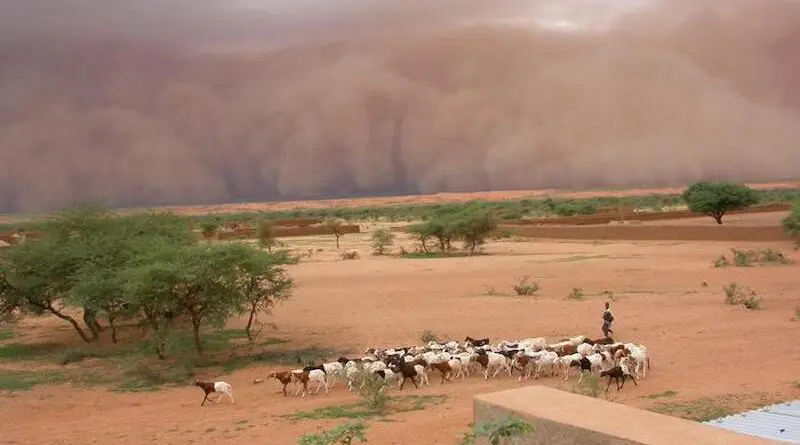The next time a devastating megastorm bears down on vulnerable communities across Africa, Asia, or South America, forecasters might look not to the sky but to the ground for crucial early warnings. Groundbreaking research reveals that the simple contrast between wet and dry soil patches can amplify rainfall by up to 30% in regions home to nearly four billion people worldwide.
Led by the UK Centre for Ecology & Hydrology (UKCEH), the study published in Nature Geoscience challenges traditional weather forecasting methods by demonstrating how land conditions significantly influence the behavior of mesoscale convective systems – massive thunderstorm complexes that can grow larger than England and travel hundreds of kilometers.
“Mesoscale convective systems are some of the most intense thunderstorms on the planet, and are increasing in severity due to climate change,” said Dr. Emma Barton, a meteorologist at UKCEH and lead author of the study. “Rising temperatures could increase the contrast between wet and dry areas of soils, further intensifying thunderstorms in already severely impacted regions.”
The research team analyzed 20 years of satellite data across multiple continents and discovered that surface conditions influencing rainfall can be observed two to five days before a storm strikes – a potential game-changer for communities regularly devastated by these weather systems.
The timing couldn’t be more urgent. Last year alone, severe flooding linked to heavy rainfall in West and Central Africa killed over 1,000 people, displaced more than 500,000, and destroyed over 300,000 homes. Just last month in Argentina, a severe storm killed 13 people, displaced over 1,000, and swept away cars while destroying critical infrastructure. In Bengal, India, a recent thunderstorm damaged around 800 homes, injured 300 people, and killed five.
Dr. Cornelia Klein, a meteorologist at UKCEH and study co-author, explains why the findings represent a paradigm shift: “Meteorologists tend to focus on atmospheric conditions to predict weather patterns. But, as a growing amount of evidence shows, we should also consider what is happening on the land surface to improve forecasting.”
The mechanics behind this phenomenon involve complex interactions between land and atmosphere. When significant contrast exists between wetter and drier areas over large distances, it creates temperature differences in the air above. These temperature variations drive changes in wind direction and speed at different altitudes, creating turbulence that helps storms grow and produce more rainfall over larger areas.
While the study focused primarily on West and southern Africa, India, and South America, researchers observed similar patterns in China, Australia, and the US Great Plains, suggesting the soil moisture-storm connection is a global phenomenon.
The practical implications extend beyond academic interest. Early storm warnings allow communities to relocate families, livestock, and possessions to higher ground, or clear blocked drains ahead of flooding. For regions where infrastructure is limited and communication networks are sparse, even a day’s additional warning could save countless lives.
The discovery builds on previous UKCEH research that found land surface conditions often affect the direction and intensity of Sahel megastorms after formation, while deforestation increases storm frequency in some rapidly growing African coastal cities.
Looking ahead, the research team is exploring what factors contribute to regional variations in this phenomenon. They’re also utilizing advanced climate models to better understand how rainfall intensity might change as global temperatures continue to rise.
Perhaps most importantly, UKCEH is already developing computer software tools to help meteorological agencies generate more reliable short-term forecasts. These include an online “nowcasting” portal based on satellite-derived data on atmospheric and soil conditions in Africa, potentially providing up to six hours of additional warning time.
“Understanding how soil moisture influences storm activity, and how this may change in the future, will be essential for more accurate short-term forecasting to warn communities about approaching storms, as well as making longer-term projections,” Dr. Barton noted.
As climate change continues to intensify extreme weather events worldwide, these findings offer a rare glimmer of hope – not by preventing the storms themselves, but by giving vulnerable communities precious time to prepare when every minute counts.
If our reporting has informed or inspired you, please consider making a donation. Every contribution, no matter the size, empowers us to continue delivering accurate, engaging, and trustworthy science and medical news. Independent journalism requires time, effort, and resources—your support ensures we can keep uncovering the stories that matter most to you.
Join us in making knowledge accessible and impactful. Thank you for standing with us!

